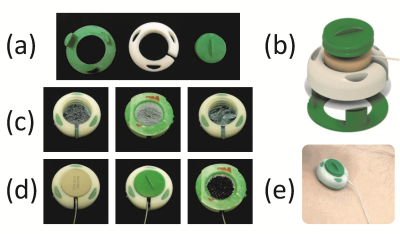Motion Correction with External Sensors
Motion Correction with External Sensors
Weekday Course
Weekday Course
ORGANIZERS: Matthias Guenther, Thomas Okell
Tuesday, 14 May 2019
| Room 510A-D | 13:30 - 15:30 | Moderators: Richard Bowtell, Klaas Pruessmann |
Skill Level: Intermediate
Session Number: TU-04
Overview
This course will give an introduction to the different options for motion detection during MRI examinations using external sensors, including methods particularly suited to brain and abdominal imaging, and how this information can be used to correct for motion.
Target Audience
Technical and clinical researchers interested in developing or using external sensors to correct for motion in MRI.
Educational Objectives
As a result of attending this course, participants should be able to:
- Describe different approaches for motion detection feasible in MR applications;
- Recognize different classes of motion detection methods;
- Select appropriate methods for specific applications to deal with motion; and
- Summarize how to utilize output of motion sensors to compensate for motion.
Overview
This course will give an introduction to the different options for motion detection during MRI examinations using external sensors, including methods particularly suited to brain and abdominal imaging, and how this information can be used to correct for motion.
Target Audience
Technical and clinical researchers interested in developing or using external sensors to correct for motion in MRI.
Educational Objectives
As a result of attending this course, participants should be able to:
- Describe different approaches for motion detection feasible in MR applications;
- Recognize different classes of motion detection methods;
- Select appropriate methods for specific applications to deal with motion; and
- Summarize how to utilize output of motion sensors to compensate for motion.
| 13:30 |
Overview of Motion Correction with External Sensors
Maxim Zaitsev
|
|
| 14:00 |
Qualitative Motion Sensors & Gating
Signe Johanna Vannesjö
|
|
| 14:30 |
Optical Tracking Systems for Neuroimaging
Oliver Speck
Head and brain motion is usually described as rigid with 6 degrees of freedom (translation and rotation). Optical tracking systems use cameras for pose tracking inside the MRI system to determine the 6 motion parameters with relatively high update rate. Optical motion tracking approaches include multiple cameras-based stereoscopic reconstruction of few markers incl. infrared tracking with cameras outside or inside the magnet bore. Alternatively, single camera approaches using encoded checkerboard markers moiré phase tracking (MPT) markers has been presented. Structured light is another alternative. These methods are now being commercialized.
|
|
| 15:00 |
 |
Abdominal Motion Detection
Bruno Madore
Sensors are everywhere, for example there are hundreds of them on a car, and they represent a natural future direction for MRI. Scanners of the future may incorporate suites of sensors gathering information about patient and hardware, providing a diverse and eclectic collection of information to be fed into convolutional neural networks for interpretation, for enhanced/improved imaging results. Work on ultrasound-based sensors will be described here in some detail; these sensors accompany patients into the MRI bore, providing streams of high-temporal resolution information about internal motion that can be utilized as part of the image reconstruction process.
|
| 15:30 |
Adjournment |
 Back to Program-at-a-Glance |
Back to Program-at-a-Glance |  Back to Top
Back to Top